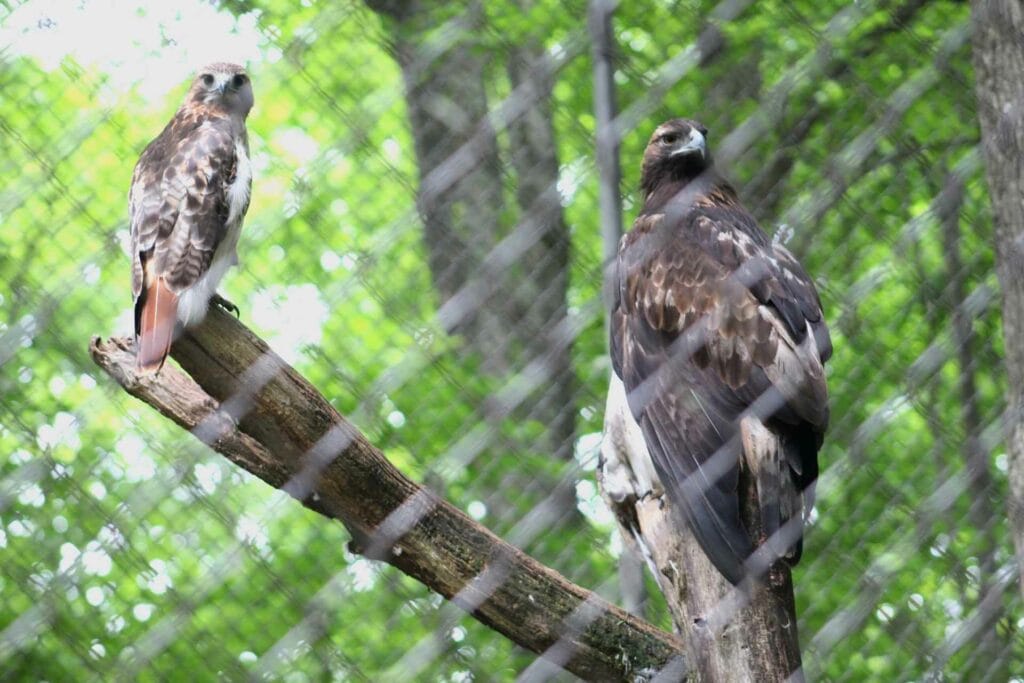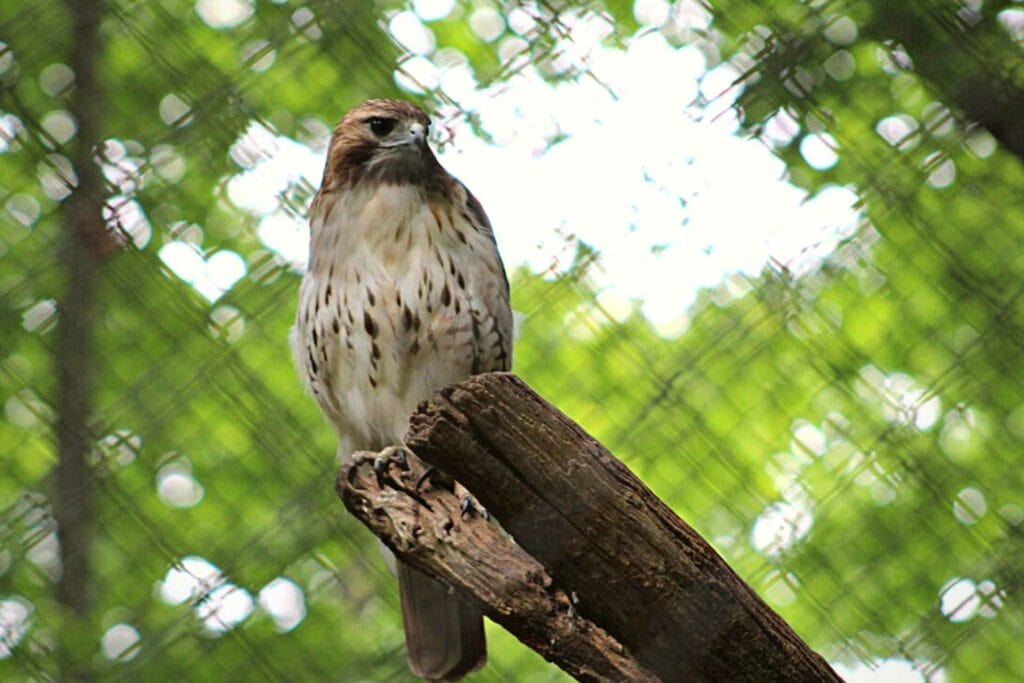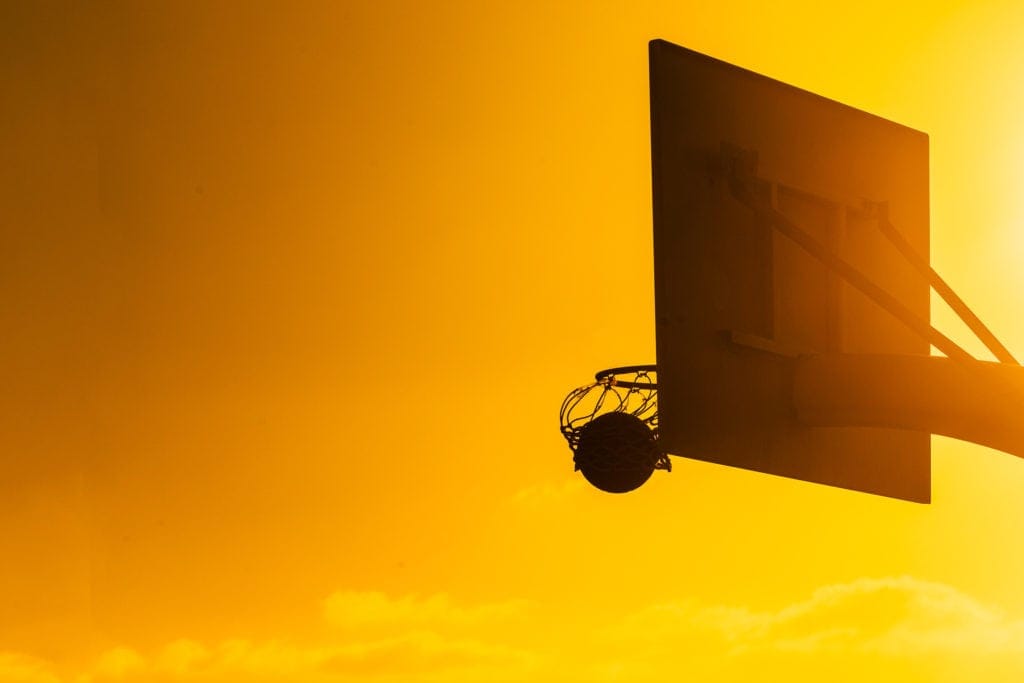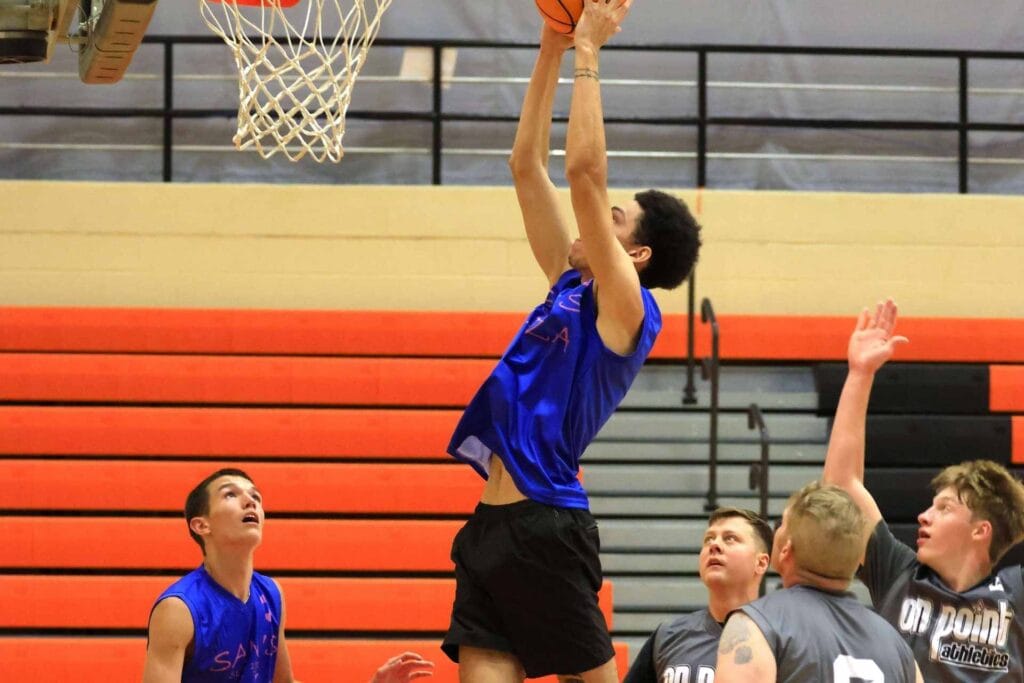BUCKHANNON – Red-tailed hawks can be seen across the United States, but they probably see you first.
West Virginia Wildlife Center biologist Trevor Moore said the center currently houses three red-tailed hawks brought in by raptor rehab centers in West Virginia.
“What ends up happening is the rehab takes the bird to the vet that we use and performs diagnostics surgery if needed and then they usually give us a recommendation to keep the bird or not,” Moore said. “We will only take ones that are non-releasable — all three of ours are unable to fly. One of them has actually had his wing amputated, so there’s no way we were able to release him.”
He said red-tailed hawks have the biggest distribution in North America, from up in Alaska all the way down to Panama and then basically clear across the United States Coast to Coast.
“They’re highly adaptable, there’s a lot of plasticity in their diet and in the habitats, they can inhabit,” Moore said. “A lot of this is very generalized because we do see some big regional variations.”
People in West Virginia are most likely to see red-tailed hawks at the top of trees or powerlines or close to their homes.

“Red-tailed hawks are adapted to hunting in open spaces, and not dense trees, so you’re going to see them on fence posts and powerlines scanning and looking for food,” Moore said. “They will very rarely interact with humans, aggressively or anything like that, they’re not that kind of bird.”
On average, red-tailed hawks are about two or three feet tall and they weigh about two-and-a-half pounds.
“You’re going to have individual differences — these are all averages, and their wingspan will average three-and-a-half to four-and-a-half feet, sometimes pushing five — so they are they are a fairly large bird,” Moore said. “A lot of people will have dogs of a similar size, but a dog would be two feet tall or two feet long dog and will weigh about 10 times more than these birds.”
Their bones are semi-hollow, more like a honeycomb, and they are much less dense than human bones.
“Most of their food is going to be small mammals, so squirrels, rabbits, chipmunks, mice, basically anything they can see in an open space, where they can swoop down and get it,” Moore said. “They have regional differences, so birds out west in the deserts may eat more jackrabbits than they will squirrels or reptiles, where they’re more prolific, but around here they are focusing more on squirrels since we have such an abundance of squirrels.”
They hunt during the day and are great at keeping the rodent population down.
“It’s really sad that I see a lot of birds get shot, especially hawks, I don’t understand why people want to hunt hawks, especially if they’re farmers and they have cattle or they have any kind of food storage and the hawks are taking up residence around their homes,” Moore said. “They’re going to be keeping the mice and the squirrel populations down, which means they won’t be getting in their food storage.”
Raptors also have incredibly impressive eyesight.
“If you’ve ever heard of the saying, ‘eagle eyed’ or Hawkeye, these things all come from the fact that Raptors have amazing eyesight,” Moore said. Raptors’ eyes fill about 1/3 of the space in their skull, so on average very much bigger than most birds, and the ratio to their skull is very large.”
Red-tailed hawks can lie up to 20 years old, but one of the oldest recorded red-tailed hawks was 30.













